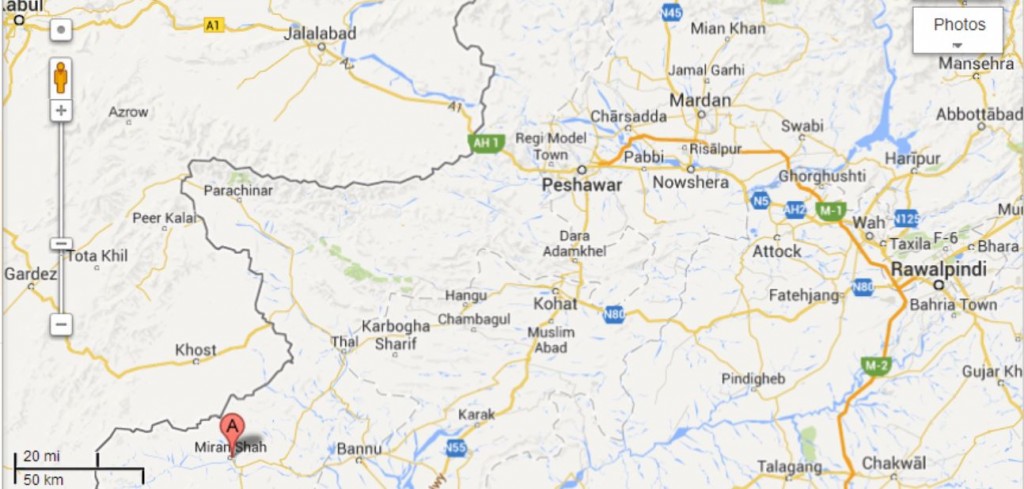Not a Drone: Pakistan Military Kills 23 Militants in North Waziristan
 Not many small towns of only a few thousand people are in the news as often or as prominently as Miranshah in North Waziristan of the Federally Administered Tribal Areas in Pakistan. Most often, it makes the news due to a drone strike carried out by the CIA. The last two days, however, have seen Miranshah and the surrounding area in the news for events that also pertain to the militants who hide out in the area, but for a distinctly different opponent of the militants.
Not many small towns of only a few thousand people are in the news as often or as prominently as Miranshah in North Waziristan of the Federally Administered Tribal Areas in Pakistan. Most often, it makes the news due to a drone strike carried out by the CIA. The last two days, however, have seen Miranshah and the surrounding area in the news for events that also pertain to the militants who hide out in the area, but for a distinctly different opponent of the militants.
Yesterday, five Pakistani soldiers were killed and over thirty were injured in a suicide attack:
At least five soldiers were killed and 34 wounded when a suicide bomber rammed his explosive-laden car into a military checkpoint in Pakistan’s troubled northwest on Wednesday, security officials said.
The attack came in the Mir Ali area of Miranshah, the main town in the North Waziristan tribal region, a hub for Taliban and al Qaeda linked militants on the Afghan border.
The TTP was quick to claim responsibility and to state that it was in response to the recent killing of their leader, Hakimullah Mehsud, who was killed in a US drone strike just as the TTP was readying to enter into peace talks with Pakistan.
Today, we have news that the Pakistani military has struck back against the TTP, killing 23:
At least 23 suspected militants were killed late on Wednesday during a clash with security forces in the country’s troubled northwest, officials said.
According to a security official who requested anonymity, the suspected militants tried to ambush a convoy of security forces which was returning back from Khajuri checkpost area in Mirali Tehsil of North Waziristan tribal region.
The convoy had gone in the area to rescue soldiers who were injured in a suicide bomb attack yesterday.
Security forces retaliated with gunfire and encircled the suspects inflicting heavy casualties.
The gun-battle continued for several hours during which the 23 suspected militants were killed.
Coverage of this fight in the Express Tribune notes reports of three civilian deaths and puts the fighting at more than one site:
At least 23 suspected militants plus three civilians were killed in raids and shelling by the armed forces in North Waziristan, officials said Thursday.
/snip/
Clashes erupted after the insurgents attacked a convoy of security forces which was returning after rescuing soldiers wounded in Wednesday’s bombing, the official said on condition of anonymity.
The death toll could not be verified independently because of an ongoing search operation and curfew in the area.
Earlier, local security officials said six of the suspected militants were killed during raids on two hotels.
“Security forces raided two hotels in the area close to the site of the suicide bombing and intense gunbattles left six suspected militants dead and 12 others wounded,” a local security official told AFP.
It is hard to overstate the significance of this development. One of the primary justifications cited for the US drone campaign that hits Miranshah so often is that the Pakistani military is both unwilling and unable to attack the militants on its own. Today, we see that quite the opposite is true. In response to a direct attack that killed five of its own, Pakistani military forces responded with a force large enough to kill 23 militants within 24 hours of the initial attack.
In its ongoing campaign to end CIA strikes as a violation of its sovereignty, Pakistan can point to today’s development as evidence that it is perfectly capable of taking its own actions against militant groups inside its borders.
Conversely, if the CIA had intelligent leadership, they would cite this development as a reason to end drone strikes in Pakistan.

